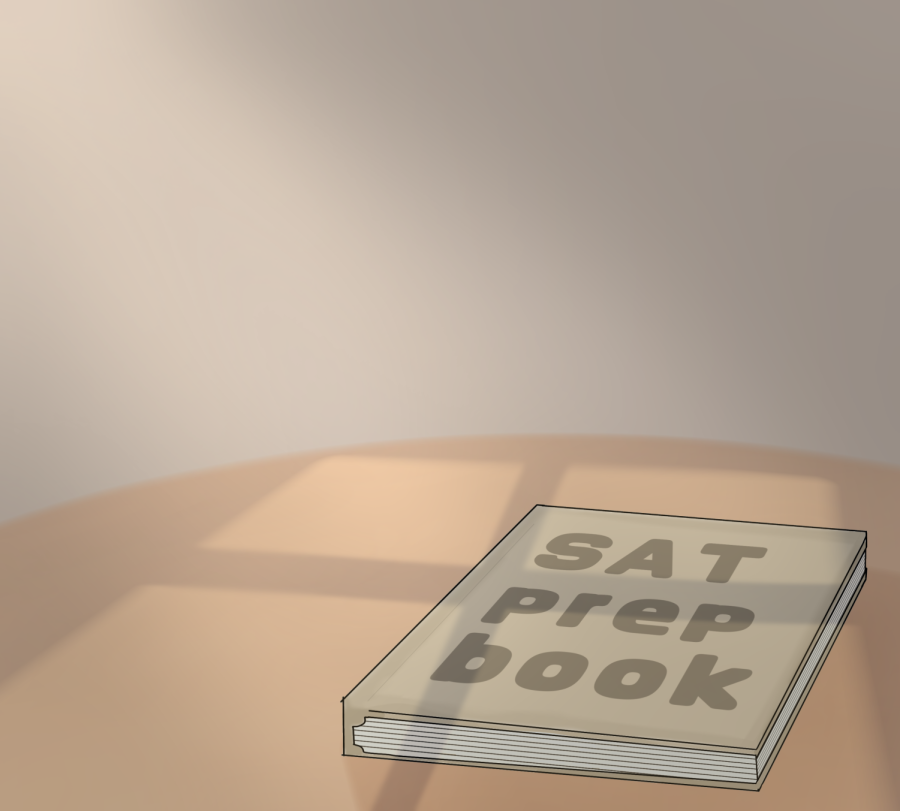Don’t Put Blind Faith in UCs’ Test-Blind Policy
February 10, 2022
Colleges have been using standardized testing for admissions for almost a century, with the SAT being implemented nation-wide in 1926 and the ACT being introduced in 1959. Since then, standardized test scores have been a determining factor for almost every student’s college admission.
However, the University of California (UC) Board of Regents recently decided that all UC schools will no longer be reviewing SAT/ACT test scores as part of their test-blind admissions process. This change has resulted in an unreliable admissions process that severely impacts a student’s ability to display their accomplishments to colleges.
In 2019, high school senior Kawika Smith, along with other students, law firms and six nonprofit organizations, sued the UC system on the basis of unconstitutional racial and wealth discrimination in the use of standardized testing for admission. At the Nov. 18 UC Board of Regents meeting, the board decided to eliminate standardized testing from consideration in UC applications from then on.
Some have argued on behalf of the benefits of the decision, pointing to the inherent inequality of standardized testing and discrepancies based on wealth. Different resources, such as books and tutors, can play a prominent role in determining a student’s score, as they teach students test-taking strategies they wouldn’t know otherwise.
SAT score statistics clearly illustrate the disadvantages minority students face, as they are less likely to receive equal access to resources and education when compared to their more privileged counterparts.
A Brookings Institute article analyzed score distribution for the class of 2020. Among the test takers scoring above 700 on the math portion, 43 percent were Asian and 45 percent were white, while only 6 percent were Hispanic or Latino and 1 percent were Black. Among those scoring between the 300-390 range, only 2 percent were Asian and 23 percent were white, in contrast to the 43 percent Hispanic or Latino and 26 percent Black.
This score disparity in standardized testing has sparked significant controversy over the use of this data in the admissions process. The complete abolishment of standardized testing all together, however, gives rise to new issues.
After the extended use of standardized testing as a measure for college acceptance, the change will make it difficult for all students to differentiate themselves from the continuously increasing number of applicants. Rather, students will have to rely on other aspects such as grades and extracurriculars to stand out in the eyes of admissions officers.
Sophomore Olivia Zaidel said that she had to change her approach to college applications by increasing her focus on extracurriculars after the UCs took a more holistic approach.
“I think that personally, [the elimination of standardized tests] is kind of unfair, because students who do have exceptional test scores on the standardized tests don’t have that facet of their academic intelligence measured by the schools and taken into account,” Zaidel said. “But then again, for kids who don’t get… the same resources to study for the exams, it’s good because they don’t have the pressure or any of the feeling of having to turn those in and not having good scores if they don’t have the same resources.”
Grades, especially, have inflated importance as they are now virtually the only determining factor of academic prowess. However, grades reflect a relatively unreliable admission consideration in comparison to standardized testing.
Different schools have distinct grading policies, which cause variation in a should-be-standardized measure of academic ability. The rigor of coursework and the standard for an “A” at one school may be significantly higher than at another, creating a major disadvantage for those in more competitive school environments. These grading disparities make the top students at a school with a strict grading policy appear to be on the same academic level as a rather average student at a school with a more generous grading policy. Serving as a direct standardized measure of college readiness, the SAT/ACT tests help to address this lack of uniformity, providing a more level playing field for admissions.
Pali Spanish teacher Myrna Cervantes agrees that GPA inflation at certain schools creates an unreliable measure of academic capability.
“[Pali] is such a demanding and high quality school that students come back from Berkeley and they’re like ‘Eh, it was okay. It wasn’t that difficult,’” Cervantes said. “We can’t compare a [students’ GPA at] a school like Pali with another school.”
She also points out that many students can cheat in their classes, indicating that grades should not be the first factor that colleges look at when determining admissions.
Inequitable access to resources exists beyond the world of standardized testing. Emphasizing grades over standardized tests will not completely alleviate the socioeconomic disparities found in the SAT and ACT tests, with cram books, high quality textbooks and tutors available to only a select handful of high school students. These can be extremely helpful for achieving impressive AP scores and an outstanding GPA, and though standardized testing may not always be reliable, neither are grades.
In these ways, the UCs’ response to the lawsuit advocating for a level playing field results in a superficial remedy that only furthers disparities in measuring the academic ability of applicants.
Pali teachers and students have varying opinions on what the ideal admissions solution should look like.
Cervantes supports the UCs’ decision to abolish the SAT/ACT, but said that she believes that there should be another form of evaluation to determine college admission.
“I do feel that there should be another sort of assessment, but not a standardized test. It should be something that allows people to demonstrate all their different abilities in test taking, which [are] oral presentations, analysis [and] working in a group… things that are real life activities,” she said.
Associated Student Body President and Pali senior Christopher Clausen echoes Cervantes’ sentiments.
“Focusing on people’s extracurriculars, the activities they do, the way they demonstrate their interest in the schools [is more beneficial]… because with the SAT/ACT, it’s [about], how much you can afford to pay a tutor and stuff like that,” Clausen said, adding that “it’s not really a measure of knowledge.”
Zaidel, on the other hand, said that she prefers a test-optional solution, which some colleges are already implementing.
“If somebody does have good test scores that they are confident in, then they have the chance to submit [them] and have [them] be considered as part of the application,” Zaidel said, “But then again, it won’t be required for students who don’t want to submit [their scores].”
Whatever the ideal solution may be, it is important to address the driving force behind the elimination of standardized testing: accessibility of study resources. Even after abolishing standardized testing from admissions, students with unequal access to resources will continue to bear the consequences, whether this be in high school grades, college grades, licensure tests and beyond.
Now is the time to make a positive change for the future of admissions. Schools should be actively focusing on making a variety of study services available to minority students. Getting to the root of the problem and reforming the college admissions process will create a successful solution where the concept of a standardized test will not have to be discontinued.












